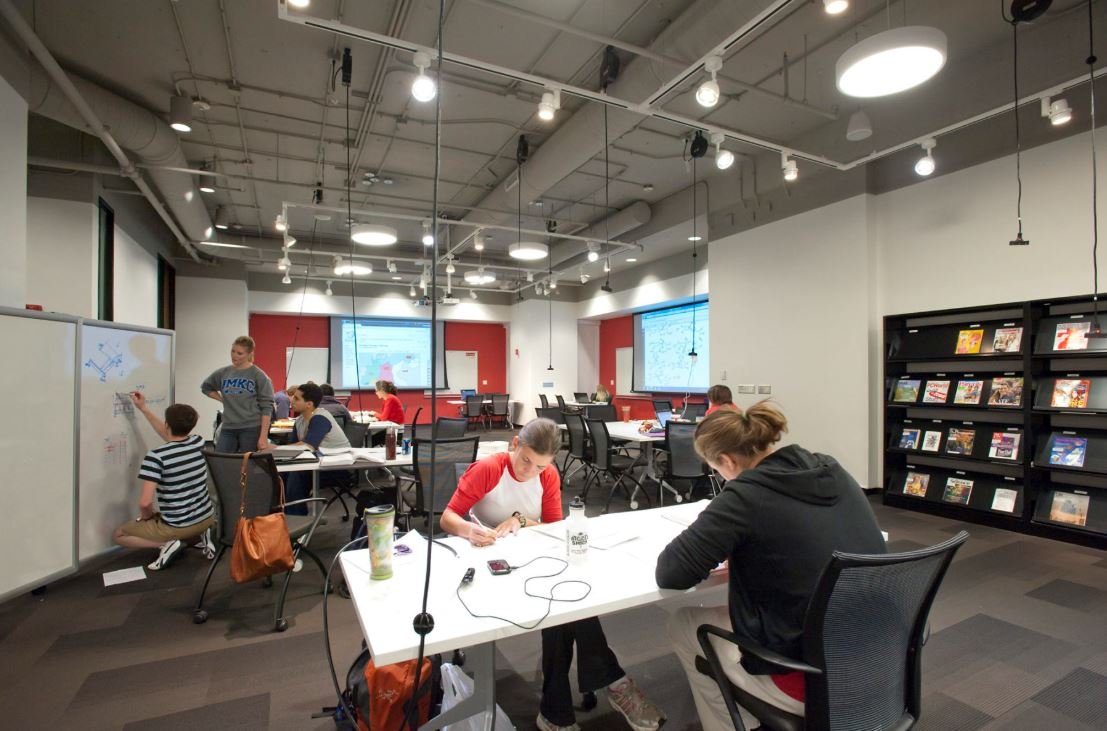Miller Nichols Library at the University of Missouri Kansas City
Kansas City, MO
Once a fortress-like structure emblematic of 1960s Brutalism, the Miller Nichols Library at the University of Missouri Kansas City has undergone a bold transformation, one that reimagines its relationship with the campus, the city, and the students it serves. Completed in 2013, the redesigned and expanded library now stands as a transparent, inviting beacon of academic life at the heart of UMKC.
The original building’s heavy concrete and limestone façade has been replaced with a dynamic interplay of glass, stone, and metal. Large expanses of glazing animate the façade, reflecting a shift from opacity to openness, from isolation to connection. The orthogonal massing of the original remains intact, but it has been reinterpreted through recessed curtain walls and syncopated bays that offer rhythm and lightness. On the west, a new academic wing continues the language of the original volume while clearly expressing its function through varied classroom sizes and sunlit atria, establishing a seamless and unified architectural presence along Rockhill Road.
At the heart of the renovation is the reorganization of interior space. A central core of book stacks has been relocated to a dedicated wing housing an advanced Automatic Storage and Retrieval System (ASRS). This move liberated over 100,000 square feet of interior space, which now hosts hundreds of study seats configured for individual work, group collaboration, and informal student-faculty interaction. The ASRS not only enhances accessibility to the library’s collection but significantly reduces the building’s energy and spatial footprint.
The transformation also extends to the landscape. The design steps the terrain down toward Rockhill Road, retaining existing surface parking while minimizing its visual impact through sculpted green berms. A rich mix of local materials, including Kansas limestone sourced within 100 miles and recycled-content metal screens, roots the building in its place while referencing nearby cultural institutions. The addition also features a green roof and daylight penetration throughout all occupied spaces, reinforcing its sustainable ethos.
Today, the Miller Nichols Library is more than just a repository of knowledge, it is a lively social and academic hub, a symbol of UMKC’s aspirations, and a model of how sensitive, strategic design can breathe new life into legacy architecture.











